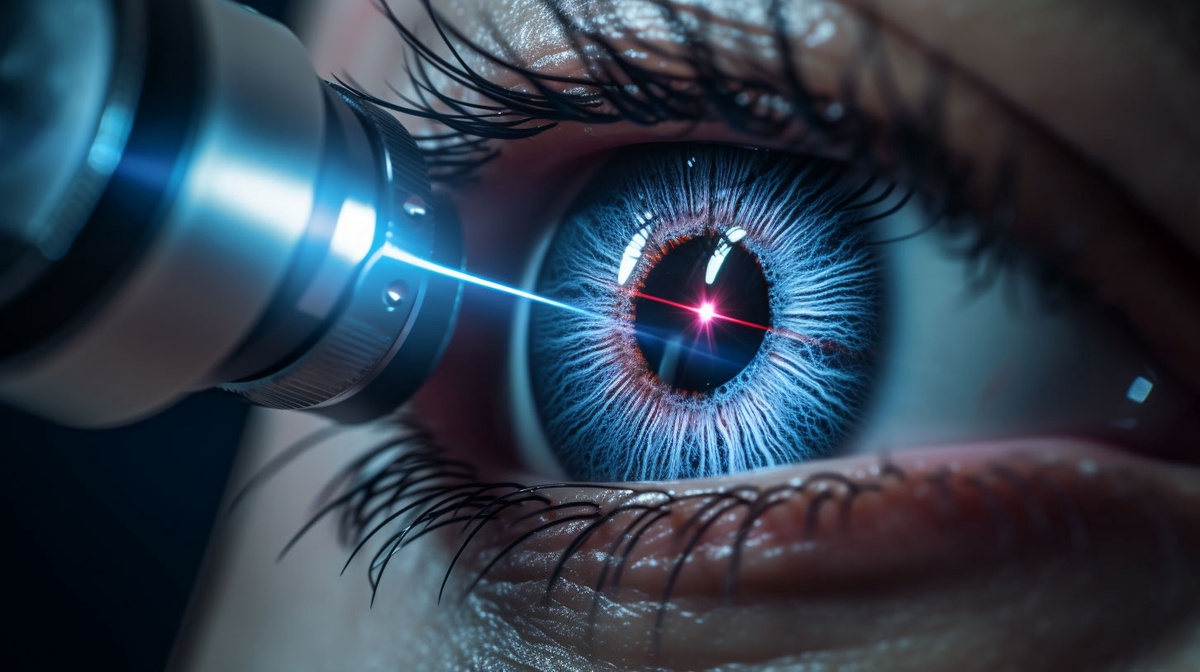Keratoconus is a corneal disorder characterized by the thinning and bulging of the cornea into a cone shape, leading to distorted vision. While it typically begins in adolescence or early adulthood, the progression of keratoconus varies from person to person. Fortunately, advancements in ophthalmic care have led to various treatment options, offering hope for improved vision outcomes. In this guide, we will explore the intricacies of keratoconus, its symptoms and other information. Please read on and if you are searching for expert keratoconus treatment san diego, such as keratoconus cross linking surgery, please refer to the ending part of the article.
Understanding Keratoconus:
1. Symptoms:
Keratoconus often starts with subtle blurring or distortion of vision, accompanied by increased sensitivity to light and glare. As the condition progresses, individuals may experience frequent changes in their eyeglass prescription.
2. Causes and Risk Factors:
The exact cause of keratoconus is not fully understood, but genetic and environmental factors may contribute. Rubbing the eyes excessively and having a family history of the condition are potential risk factors.
3. Diagnostic Methods:
Diagnosis involves a comprehensive eye examination, including corneal mapping and topography, which measures the shape and thickness of the cornea. Additionally, optical coherence tomography (OCT) may be used to obtain detailed images of the cornea.
Keratoconus Treatment Options:
1. Spectacles and Contact Lenses:
In the early stages, eyeglasses or soft contact lenses may be prescribed to correct vision. However, as the cornea continues to change shape, more advanced solutions are often required.
2. Rigid Gas Permeable (RGP) Contact Lenses:
RGP lenses provide a rigid and smooth surface over the cornea, compensating for its irregular shape. These lenses can offer improved vision quality and are particularly effective in the early to moderate stages of keratoconus.
3. Hybrid Contact Lenses:
Hybrid lenses combine a rigid center with a soft peripheral edge, aiming to provide the clarity of RGP lenses with the comfort of soft lenses. This hybrid design can be beneficial for those struggling with RGP lenses alone.
4. Scleral Contact Lenses:
Scleral lenses vault over the cornea, resting on the sclera (white part of the eye). This design provides better stability and comfort, making them a preferred option for some individuals with advanced keratoconus.
5. Corneal Cross-Linking (CXL):
Corneal cross-linking is a minimally invasive procedure that involves applying riboflavin (vitamin B2) eye drops to the cornea, followed by exposure to ultraviolet (UV) light. This process strengthens the corneal collagen fibers, slowing or halting the progression of keratoconus.
6. Corneal Transplant (Penetrating Keratoplasty or PK):
In advanced cases where other treatments are ineffective, a corneal transplant may be considered. This involves replacing the damaged cornea with a healthy donor cornea.
Lifestyle and Coping Strategies:
Beyond medical interventions, individuals with keratoconus can adopt lifestyle adjustments and coping strategies to manage the condition effectively:
1. Regular Eye Examinations:
Routine eye examinations are crucial for monitoring the progression of keratoconus and adjusting treatment plans accordingly.
2. UV Protection:
Protecting the eyes from excessive UV exposure is essential, as UV rays may contribute to the progression of keratoconus.
3. Eye Health Maintenance:
Adopting a healthy lifestyle that includes proper nutrition, regular exercise, and avoiding habits like eye rubbing can contribute to overall eye health.
4. Patient Support Groups:
Joining patient support groups or seeking counseling can provide emotional support and a platform to share experiences with others facing similar challenges.
Conclusion: Find the best keratoconus treatment in San Diego
The landscape of keratoconus treatment is continually evolving, offering a range of options to manage this progressive corneal disorder. From traditional contact lenses to advanced surgical procedures, individuals with keratoconus have access to a spectrum of interventions tailored to their unique needs. Emerging technologies and ongoing research hold promise for further advancements, pointing toward a future with even more effective and personalized treatment approaches. Regular eye examinations, coupled with a proactive approach to eye health, can empower individuals to navigate the complexities of keratoconus and maintain optimal vision outcomes. If you suspect keratoconus or experience changes in your vision, consult with an eye care professional for a comprehensive evaluation and personalized treatment plan. To know more or to learn about keratoconus cross linking surgery, please visit the website.


No comments yet